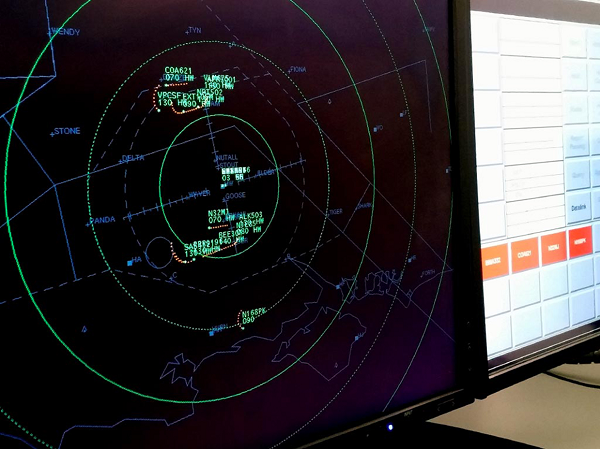Airspace Q3 2019 – Moving to the same rhythm

Emanuel Chaves, Chairman and CEO of Aeroportos de Moçambique (ADM), explains recovery efforts following a devastating cyclone and the need for harmonisation.
How have the cyclones affected your infrastructure?
The cyclones that occurred in Mozambique earlier this year severely affected aviation infrastructures and systems. The most affected airport was Beira. In terms of infrastructure, the passenger and cargo terminals were badly damaged, and all the buildings lost their roofs, windows and fencing.
The systems were also affected, with the destruction of electric poles, vertical signals, wind direction indicators, runway lights and so forth. Navigational aids such as VHF omni-directional range (VHF), instrument landing system (ILS), automatic dependent surveillance – broadcast (ADS-B), and the aeronautical fixed telecommunication network (AFTN) also stopped operating.
However, after the cyclones, strong efforts were made to re-establish a safe and efficient operational environment and most of the infrastructures and systems resumed operation quickly.
What are your plans to upgrade infrastructure and systems across the country in the next few years?
The main plans to upgrade infrastructure and systems across the country in the next few years will focus mostly on the rehabilitation of runways at a number of main airports, including Vilankulos, Chimoio, Mocimboa da Praia, Lichinga, Tete and Nampula.
We will also modernise and extend passenger terminals at Beira, Quelimane and Nampula and construct a new tower for Vilankulos airport.
More generally, the company intends to purchase and install new VHF and high frequency communication systems; to modernise the fixed communication systems through the migration from AFTN to the ATS message handling system for fixed message handling; and to acquire new firefighting vehicles and ambulances for airports and aerodromes.
Has LAM Mozambique’s struggles affected your strategy?
Definitely. Our communication navigation and surveillance / air traffic management (CNS/ATM) implementation strategy has been affected in the medium and long term since income revenues are not as planned.
But though LAM Mozambique is operating with some financial constrains that impact our company as an ANSP, we will continue operating according to the standards and recommended practices from ICAO and CANSO.
Are you getting enough funding to make the required upgrades and, in general, what more can be done to persuade governments to invest in ATM?
We have a good relationship with the government, and we are aligned in terms of ensuring appropriate safety levels for operations in our airspace.
With such a large oceanic airspace to cover, does space-based ADS-B interest you?
Space-based ADS-B certainly interests us. It is a crucial tool for safe and accurate navigation operations, especially in oceanic and remote areas.
How are you cooperating with neighbouring airspaces and how important is regional harmonisation to more efficient airspace?
There have been various actions taken towards regional harmonisation to ensure more efficient operations in the airspace. The regional ANSPs share the very small aperture terminal (VSAT) network and a number of bilateral or multi-lateral agreements are used to share expertise and experiences among the ANSPs in the region.
We have agreements with TCAA (Tanzania) and ATNS (South Africa) and similar understandings with adjacent flight information regions, including Harare, Antananarivo, Johannesburg, Lilongwe and Lusaka.
Do you find it easy to recruit controllers and is there more the industry could do to help ANSPs attract new talent?
In our experience, it is easy to recruit controllers. The aviation industry is an attractive proposition in Mozambique. Generally speaking, it is a promising and well-paying career compared with other professions.
In general, what do you see as the main challenges for ANSPs in the years ahead?
The main challenges for ANSPs in the coming years will be related to the modernisation of the CNS/ATM systems in line with the global and regional plans of ICAO and CANSO.
In Mozambique, we will need to adopt processes and procedures to maintain our operations and provide technical staff with the necessary skills according to the requirements and recommendations of best practice in the aviation industry. This will enable us to cope with the increase in traffic in the Africa region in the years ahead.
Are technical skills required to lead an ANSP or do you think business ability is more important in the modern environment?
Both elements are important to lead an ANSP. But since the aviation industry is very specific in the technical skills required, this element perhaps has a slightly more important role for the success of ANSP operations in the modern environment.
If you could change one thing about the industry, what would it be and why?
It would be good to establish a mechanism that allows the ANSPs to move to the same rhythm in terms of access not only to technology but also to staff qualifications and management processes, regardless of their financial and technical capacity.
This would help to build a harmonised environment for ANSPs and also improve service delivery for the airspace users.



